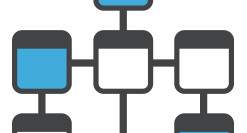When companies sell Visual Analysis tools, they use standard excel or csv data (in many cases) to show case the ability of the tool. Once the tool comes into IT infrastructure, team assumes that tool fits in the existing environment with ease.
But things go wrong in first few months if existing data is not stored in a way the visual tool consumes. We may have data in the format which is not suitable to consume by the visual analytics tool (if you are having more reports based on stored procedures, its true in most cases).
Any Visual Analysis tool in the market today is designed by keeping the current issues in OALP tools.
What are the current issues in the current OLAP tools?
- It cannot perform very well on huge amount of data pull (slow response time) in some cases.
- Even if we refresh the data once in a day in OLAP tools, the file size becomes very big as there is no compression happens in the data layer of the report.
- The data has to be in the RDBMS in many cases for OLAP tools. So, traditional Enterprise DW, Data Marts and ODS platforms are considered as Data Layers.
- Visualization capability is not good in OLAP tools (in many cases) as its primarily designed to Ad hoc Query abilities.
To overcome the above issues of OLAP tools, in memory visual analytics tools pulls the data in bulk and compress the data. Its also flexible enough to link data sets from various sources with ease.
So, my recommendation is creating a virtual layer of Views (call it as Visual Views) on top of existing Data Warehouses, Data Marts, ODS and OLTP Systems for Visual Analytics. This approach will reduce the implementation time of Visual Analytics Project.
Analyzing measures across various dimensions are multi dimensional analysis. So, make sure you have few stories to explain using the Time Series, Segmentation, Association analysis.
Name your views as Base Views, Subject Area Views, Business Views and Reporting /Dashboard Views. As IT team spreads across various functions, different views help different stake holders to do their job better.
Building Layers of Views allows the Business Analysts directly utilize the view with out any IT help. This will be the first step towards Self Service BI.







